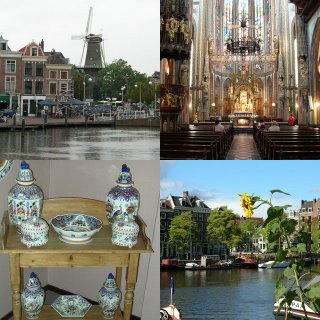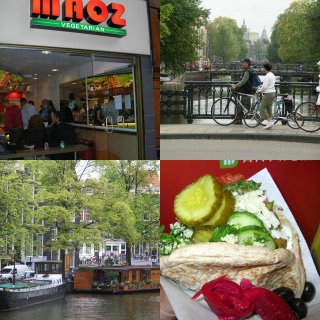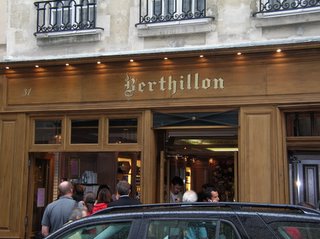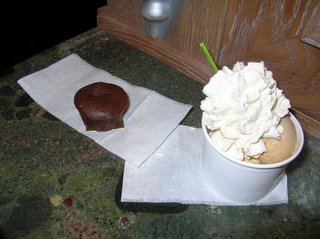
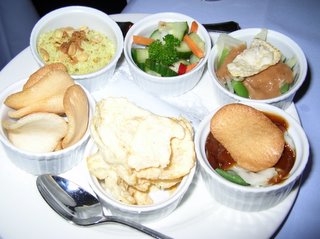
RESTAURANT: Tempo Doeloe
LOCATION: Utrechtsestraat 75 Amsterdam, The Netherlands
DATE: September 17, 2005
FOOD: Nasi Koening - Indonesian festive dinner with yellow rice and the following dishes: Sajoer Lodeh, Ajam Opor, Ora Arie, Daging Semoor, Paksoy, Godon Dari Sapi, Sambal Goreng Beans, Sambel Goreng Oedang, Sambel Goreng Tempeh, Oerapan, Ajam Roedjak, Sateh Ajam
BEVERAGE: Bentang (Indonesian Beer)
PRICE: 32 Euros
Thai is known for the fiery intensity of its sauces. Chinese Dim Sum is a kaleidoscopic view into the cuisine’s diversity of small plates. Indian shares the heat of Thai, but its spiciness is more upfront, its bread, rice, and meat combinations with a distinctly contrasting heat to that of Bangkok. Vietnamese food is lighter, often based around soups and noodles; Malaysian is a conglomeration of exotic sensations. Then there’s Pakistani, Afghani, the stewed meats of Himalayan and Tibetan, not to mention the beautiful simplicity of Japanese. Asian cuisine presents seemingly endless possibilities, few, if any, which when prepared in authentic style could ever bore a diner.
And then there’s Indonesian. Though uncommon in the United States, the Netherlands, especially Amsterdam, has embraced rice tables and gado gado with the famous Dutch open-mindedness. For every canal in the city, there appears an Indonesian restaurant to match. The question is which restaurant is the best.
Tempo Doeloe has accrued a reputation as one of (if not the) premier destination for the art of Indonesian. Situated in a posh street in the city center, the restaurant’s name means “Old Days” and to enter, patrons must ring a bill before the hostess grants them admittance. The effect of this procedure is less pretentious than one might expect and shows more about the seriousness with which the restaurant prepares their dishes. Walking into Tempo Doeloe is like stepping into a culinary sanctuary – while the ambience is courteous and inviting, chefs prepare and waiters serve meals with a disciplined attention to detail.
While the menu offers both appetizers and entrees a la carte, it’s the tasting menus, specifically the rice tables that are Tempo Doeloe’s most popular options. The full rice table consists of over 20 petite dishes, while there are also two smaller and less expensive meat and vegetarian tables. The large one contained five beef dishes, making the nine-course meat table more appealing to me.
Tempo Doeloe took the foundations Tanjung San had laid and did to them what Frank Gehry’s brilliance did for Minnesota’s architectural scene – namely expanded it and caused the basic to flourish. From the night’s initial bite to its cessation, every flavor was enhanced, every course offering insight into new worlds. This started with prawn and rice crackers, Indonesian snacks which Tempo Doeloe easily could have overlooked without sacrificing the pleasure built by the entire meal. But the two types of crackers exploded with crunch and the refusal to submit to the mundane. The rice was a cross between gourmet potato chips and rice cakes, while the prawn crackers dazzled with their oyster cracker like thickness and traces of shrimp.
A chicken skewer in peanut sauce announced the opening of the meal in full. The peanut sauce was astonishingly singular, a true feat considering how many version of peanut sauce are available. It had the hue of rich chocolate and a similar viscosity. It coated the tongue with a marvelous blend of sweetness and the natural salty cream of peanut butter. The sauce was close to a nut gravy and for it alone, Tempo Doeloe is a master restaurant.
The rijstaffel then descended in all earnest, including a notable pot of baby shrimp in red pepper broth. Holders contained cabbage, cucumber, and tomato courses which though distinct in their own right, were linked b y the heavy application of vinegar in their sauces. A chicken dish illustrated the milder side of green curry, the aromatic tang of cilantro mixed with meat in a dynamic fusion. A pork dish mirrored Himalayan Yak’s stewed goat. It was a personal Indonesian buffet, mounds of yellow rice with friend and green onions serving as the starchy platform for the spectrum of flavors. Even the toasted coconut, mixed with peanuts, was above and beyond the ordinary.
With such successes, Tempo Doeloe might seem a culinary utopia. Yet for all its triumphs, its lone failure was also a huge cause for complaint. The spice levels at Tempo Doeloe purportedly attain Gobi desert temperatures, yet for all the hype, none of the dishes in the rice tables exhibited anything more than the mere building blocks of concentrated heat, a true disappointment I must say. Thus, a meal bordering on the sublime, was unable to take the final step. Tempo Doeloe was a fantastic experience, the rice table a breadth of new marvelous tastes. But with the spice levels turned down to low, an essential ingredient of Indonesian cuisine went missing. However, the lack couldn’t strip the meal of its otherwise delicious combinations, and for that, Tempo Doeloe was worth every Euro.
RATING: 8.0/10



